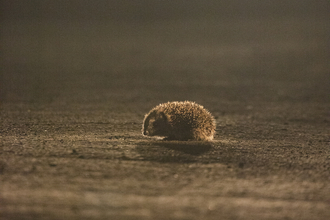We are told that the road has been designed to minimise impact on nature, but the damage will still be significant: one site of special scientific interest will be directly affected along with two local wildlife sites and one ancient woodland; four kilometres of hedgerows will be lost, and a number of irreplaceable veteran trees including the ‘Darwin Oak’. Shropshire Council acknowledge that biodiversity net gain will not be achieved.
And is not just the impact on the line of the road itself. If this is built we can expect that that new housing developments will spring up along this new access route, completely cutting off the last green corridor into the heart of Shrewsbury.
In 2019 Shropshire Council declared a climate emergency, and a goal of reaching net zero emissions by 2030. It is very hard to see how the release of 48,000 tonnes of CO2 from construction can be squared with this laudable goal. Offsetting is promised for some of that figure, but this aspiration rests on unproven technology and would take decades in any case.
The Wildlife Trusts are not opposed to all development. People and businesses need decent modern infrastructure. But this seems a very twentieth-century response to a twenty-first century problem. Decision makers have to find right balance between costs and benefits, and in this case we do not believe that they have.
True, some communities suffer from ‘rat running’. Understandably they feel that the new road will help - but it is not clear from the traffic modelling that it will. Other traffic management techniques are available but have not been tried. Meanwhile communities along the new road will see increased traffic and great disruption, and ‘induced traffic’ may negate any short-term gains in the town centre.
It is reported that the scheme will now cost around £200m. Surely there are more forward-looking ways of using the available funds to benefit the county as a whole. For example Shropshire Council is now trialling on-demand electric buses. Could not some of the money be spent on extending this, and improving rail connections, cycle routes, and park and ride schemes?
With the climate and nature emergency starting to bite, public opinion is changing: there were over 5,000 objections to the scheme and less than 300 comments in favour. I wonder if this scheme will be seen in hindsight as one of the last examples of an obsolete way of thinking?


